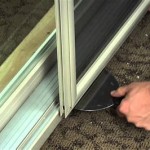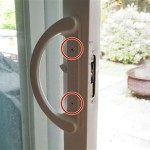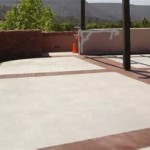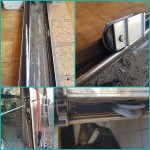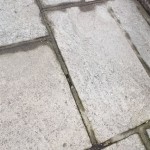Plexiglass Patio Table Top Replacement: A Comprehensive Guide
The patio table, a central element in any outdoor living space, often endures significant wear and tear from the elements. Exposure to sunlight, rain, and temperature fluctuations can degrade the table surface, leading to cracks, discoloration, and overall damage. When the original table top is made of glass or wood, replacement might involve considerable expense or intricate carpentry. However, plexiglass offers a practical and aesthetically pleasing alternative for patio table top replacement. This article provides a detailed guide to selecting, preparing, and installing a plexiglass patio table top.
Plexiglass, also known as acrylic, is a transparent thermoplastic that is often used as a lightweight and shatter-resistant alternative to glass. Its durability, weather resistance, and versatility make it an excellent choice for outdoor applications, including patio table tops. Before embarking on a plexiglass replacement project, it's crucial to understand the material's properties, the necessary tools and supplies, and the steps involved in ensuring a successful installation.
Key Considerations Before Replacing Your Patio Table Top with Plexiglass
Before proceeding with the replacement, several factors should be considered to ensure the selection of the right plexiglass and a successful installation:
1. Determining the Required Thickness and Size: The thickness of the plexiglass is paramount for its structural integrity and ability to withstand weight and impact. For patio tables, a thickness of ¼ inch (6mm) is generally recommended for smaller tables, while larger tables or those that will bear heavier loads may require ⅜ inch (9mm) or even ½ inch (12mm) plexiglass. To determine the appropriate thickness, consider the size of the table top and the anticipated weight it will need to support. Larger spans require thicker material to prevent sagging or flexing.
Accurate measurements are also crucial. Measure the existing table top carefully, paying attention to the shape and dimensions. If the existing top is damaged or unavailable, measure the table frame or opening where the top will be placed. It is crucial to account for any overhang or edge detailing. It is advisable to create a template of the table top, especially for irregularly shaped tables. Use cardboard or paper to trace the outline and any curves or angles. This template can then be used as a guide for cutting the plexiglass.
2. Choosing the Right Type of Plexiglass: Plexiglass is available in various grades and finishes, each with specific properties. For patio table tops, consider the following:
* Extruded Acrylic: This is a more economical option, suitable for general-purpose applications. However, it is more prone to scratching and cracking than cast acrylic.
* Cast Acrylic: This is a higher-quality option with superior optical clarity, scratch resistance, and chemical resistance. It is less likely to crack or craze over time, making it a more durable choice for outdoor use.
* UV-Resistant Acrylic: Prolonged exposure to sunlight can cause plexiglass to yellow or become brittle. UV-resistant acrylic is formulated to withstand the damaging effects of ultraviolet radiation, ensuring long-lasting clarity and durability.
The finish of the plexiglass can also be customized. Clear acrylic provides maximum transparency, while frosted or textured acrylic can offer privacy or a more diffused look. Smoked or tinted acrylic can reduce glare and add a touch of sophistication. Consider the overall aesthetic of the patio and the desired level of privacy when selecting the finish.
3. Assessing Existing Table Frame and Structure: Before installing the new plexiglass top, thoroughly inspect the existing table frame and structure. Ensure that the frame is sturdy and level. Repair any loose joints, rust, or damage. The frame must be capable of supporting the weight of the new plexiglass top and any items placed on the table.
Consider how the plexiglass top will be attached to the frame. Some tables have a recessed area or ledge that supports the table top. Others may require clips, screws, or adhesive. If using screws, ensure that the frame is thick enough to securely hold the screws without splitting. If using adhesive, select a product that is specifically designed for bonding plexiglass to the frame material. Clean the frame thoroughly before installing the new top to ensure a strong and durable bond.
Necessary Tools and Materials for Plexiglass Patio Table Top Replacement
A successful plexiglass patio table top replacement requires a few specialized tools and materials. Gathering these items before starting the project will streamline the process and minimize potential delays:
* Plexiglass Sheet: The size, thickness, and type of plexiglass will depend on the table dimensions and desired properties.
* Measuring Tape: Accurate measurements are crucial for a proper fit.
* Straight Edge or Ruler: A straight edge will guide the scoring and cutting of the plexiglass.
* Plexiglass Scoring Tool: A specialized scoring tool is designed to create a groove in the plexiglass surface for a clean and controlled break. A utility knife can also be used with caution.
* Clamps: Clamps are used to secure the plexiglass to a work surface during cutting and drilling.
* Drill with Plexiglass Drill Bits: Specialized drill bits are designed to prevent cracking or chipping when drilling into plexiglass.
* Sandpaper (Various Grits): Sandpaper is used to smooth the edges of the plexiglass and remove any imperfections.
* Plexiglass Polishing Compound: Polishing compound can restore the clarity of the plexiglass and remove scratches.
* Safety Glasses: Safety glasses are essential to protect the eyes from flying debris during cutting and drilling.
* Gloves: Gloves protect the hands from cuts and scratches.
* Cleaning Supplies: Mild soap and water are used to clean the plexiglass before and after installation.
* Plexiglass Adhesive or Mounting Hardware: Depending on the table design, adhesive or mounting hardware will be needed to secure the plexiglass to the frame.
* Soft Cloths: Soft cloths are used for cleaning and polishing the plexiglass.
Step-by-Step Guide to Replacing Your Patio Table Top with Plexiglass
The following steps outline the process of replacing a patio table top with plexiglass. It is important to work carefully and follow safety precautions to ensure a successful and aesthetically pleasing result.
1. Preparing the Plexiglass Sheet: Place the plexiglass sheet on a clean, flat work surface. Ensure that the surface is free of debris that could scratch the plexiglass. Remove any protective film from the plexiglass, leaving only the areas that will be cut. Using the template or measurements, mark the cutting lines on the plexiglass with a felt-tip pen or grease pencil. Ensure the markings are clear and accurate.
2. Cutting the Plexiglass: There are several methods for cutting plexiglass, including scoring and snapping, using a table saw with a specialized blade, or using a jigsaw with a fine-tooth blade. For a DIY project, scoring and snapping is often the most accessible method. Secure the plexiglass to the work surface with clamps, positioning the cutting line along the edge of the table. Using a plexiglass scoring tool and a straight edge, score the plexiglass along the marked line. Apply firm, even pressure and make multiple passes until a noticeable groove is formed. The depth of the groove will depend on the thickness of the plexiglass. Once the groove is deep enough, carefully snap the plexiglass along the scored line. This can be done by placing the scored line over a sharp edge and applying gentle pressure on either side.
If using a power saw, ensure that the blade is specifically designed for cutting plastics. A fine-tooth blade with minimal set will produce the cleanest cuts. Feed the plexiglass slowly and steadily into the blade, avoiding excessive pressure or vibration. Always wear safety glasses when using power tools.
3. Smoothing the Edges: After cutting, the edges of the plexiglass will likely be rough or uneven. Use sandpaper to smooth the edges and remove any sharp corners or burrs. Start with a coarse grit sandpaper (around 120 grit) and gradually move to finer grits (around 220-400 grit) for a smooth finish. For a polished look, finish with a very fine grit sandpaper (600 grit or higher) and then use a plexiglass polishing compound. Apply the polishing compound to a soft cloth and rub it onto the edges of the plexiglass in a circular motion. Buff the edges clean with a fresh cloth to reveal a smooth and polished surface.
4. Drilling Holes (If Necessary): If the table design requires screws or bolts to secure the plexiglass, drill pilot holes before attaching the top. Use a drill with plexiglass drill bits, which are designed to prevent cracking or chipping. Mark the locations of the holes on the plexiglass and use a center punch to create a small indentation for the drill bit to follow. Clamp the plexiglass securely to the work surface and drill the holes slowly and steadily, avoiding excessive pressure. It is recommended to start with a smaller drill bit and gradually increase the size until the desired diameter is reached.
5. Cleaning the Plexiglass: Before installing the plexiglass top, clean it thoroughly with mild soap and water. Use a soft cloth to wipe the surface, removing any dust, dirt, or fingerprints. Avoid using harsh chemicals or abrasive cleaners, as they can damage the plexiglass. Dry the plexiglass with a clean, lint-free cloth.
6. Installing the Plexiglass Top: Carefully position the plexiglass top onto the table frame. If using adhesive, apply a thin, even layer of plexiglass adhesive to the frame where the plexiglass will make contact. Follow the adhesive manufacturer's instructions for application and curing time. If using screws or bolts, align the holes in the plexiglass with the corresponding holes in the frame and secure the top with the appropriate fasteners. Do not overtighten the screws or bolts, as this can crack the plexiglass.
If the table frame has a recessed area or ledge, ensure that the plexiglass top sits securely within the recess. If necessary, use shims or spacers to level the top and prevent it from wobbling.
7. Final Inspection and Finishing Touches: Once the plexiglass top is installed, conduct a final inspection to ensure that it is securely attached and properly aligned. Clean the surface of the plexiglass again to remove any fingerprints or smudges. If desired, apply a plexiglass sealant or protectant to further enhance its durability and resistance to scratches and weather damage.
By following these steps carefully, a durable and attractive plexiglass patio table top replacement can be achieved, extending the table's life and enhancing the outdoor living space.

1 4 Plexiglass Patio Table Top Replacement Glass 30 Dia

Patio Tabletop Glass Replacement Acrylic

42a Round Acrylic Top Florida Patio Outdoor Furniture

42 Round Umbrella Top Acrylic Tropitone Outdoor Furniture Replacement Parts

From A Crashed Glass Table To Wood One Diy Patio Outdoor

Patio Table Top P A Plastics Fabrication

Patio Table Glass Replacement Ideas Genius

Bespoke Glass Table Tops Toughened Cut To Size

Diamond Glass And Mirror Dgmglass Com Birmingham Alabama

Fab Glass And Mirror 42 In Clear Round Patio Table Top 1 4 Thickness Tempered Flat Edge Polished W 2 Hole 42rt6thflte H The Home Depot

